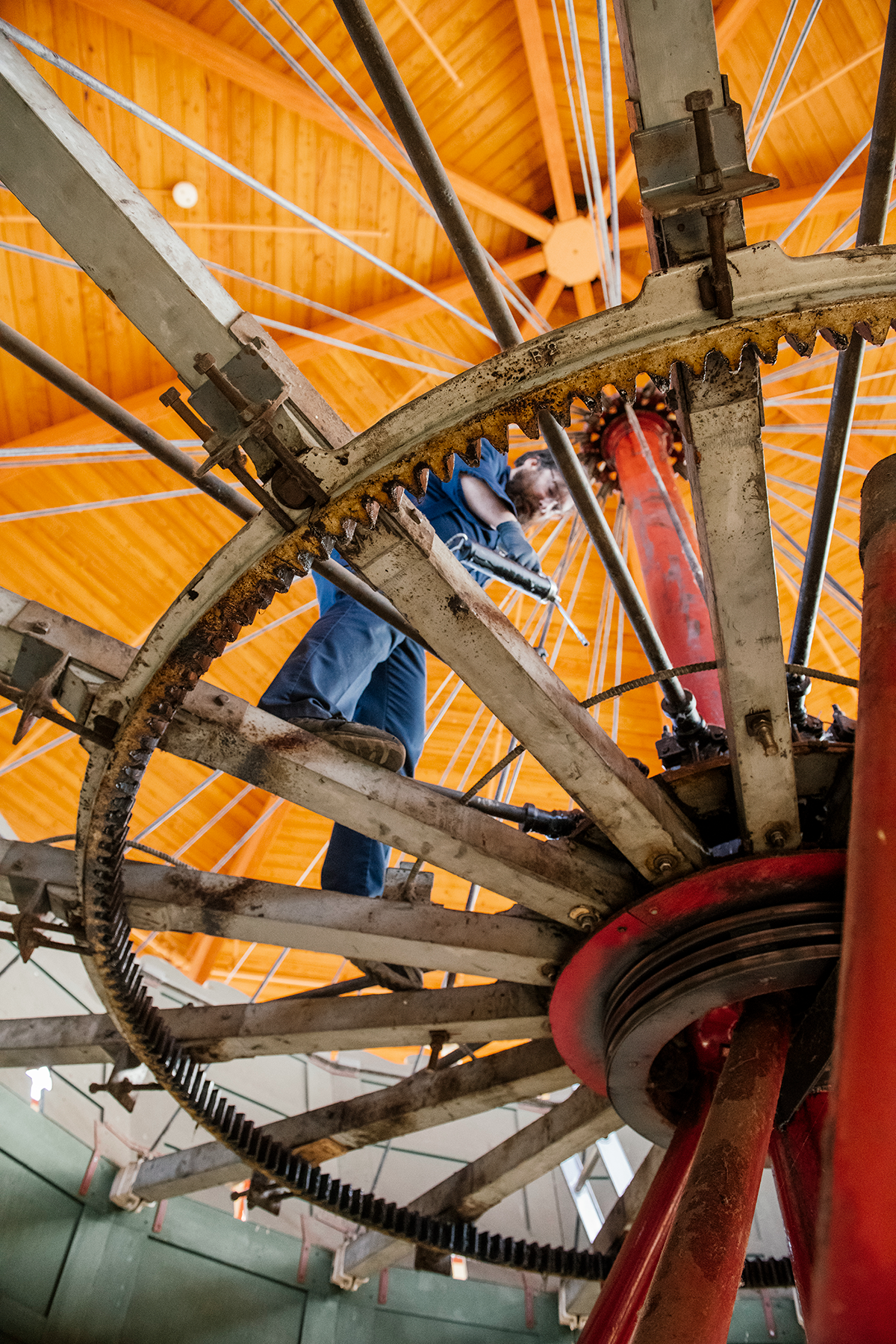Masterpiece of Motion
Our carousel exposed: a simple mechanism with lots of pizzazz

Each week Jacob Hildebrandt, manager, historic operating machinery, climbs atop Greenfield Village's Herschell-Spillman Carousel to properly lubricate its gears and fittings. During the season, the Henry Ford staff also do daily safety inspections of the carousel, listening for squeaks and grinding noises, inspecting for loose boards and bolts, putting pressure on every animal and many other checks. / Photo by EE Berger
In this blog, we examine what's at the heart of the carousel — the inner workings that keep the ride in motion and the staff that maintains its motor, gears and bearings so thousands of visitors can go round and round and up and down each year.
Today, a 10-horsepower electric motor runs the carousel. In 1913 when the ride was built, it was likely run by an early Westinghouse electric motor, said Jacob Hildebrandt, manager, historic operating machinery.
A fairly simple machine, the carousel's motor turns a vertical drive shaft that runs up to the crown of the ride. The rotation of that shaft then rotates a large ring gear at the top that turns the carousel round.
“It's like twirling an umbrella,” said Hildebrandt. “All the power comes from the middle and spreads out.”
The carousel's electric motor is connected to a gearbox with an electric brake and torque converter similar to a vehicle so the motor can run before the carousel begins to spin, avoiding jerky, sudden movements. The brake can bring the ride to a complete stop within two revolutions.
Radiating from the middle are smaller crankshafts with bevel gears, which is what the carousel's moving animals hang from. The rotation of these shafts and gears — and therefore the up-and-down motion of the animals — is powered by the carousel's spin.
Marc Greuther, vice president, historical resources and chief curator, who has intimate knowledge of the underbelly of the carousel, likens the transfer of power from a shaft on a vertical axis to a set of undulating animals on a platform as “a quiet masterpiece of motion."
To keep this masterpiece in motion, Hildebrandt, one other full-time employee and a part-time staffer are on-site daily climbing about the ride lubricating its gears and fittings. “Functionally, the grease we use is one of the most modern things about the carousel today,” he said.
The carousel is equipped with highly durable Babbitt-style bearings, added Hildebrandt, rather than the now more common ball bearings. In the early days, these bearings and the carousel's gears would have been lubricated with a less-viscous oil, which is much messier and ephemeral than the grease now used — which “sticks to everything,” said Hildebrandt.
While some of the carousel's larger gears have worn and been replaced over the years, for the most part its internal hardware remains original. “It's a fairly straightforward mechanism underneath the skin,” said Greuther. “An application of very, very practical machinery that's the result of innovation and applications in industry.”
Jennifer Laforce, managing editor, The Henry Ford Magazine


Facebook Comments